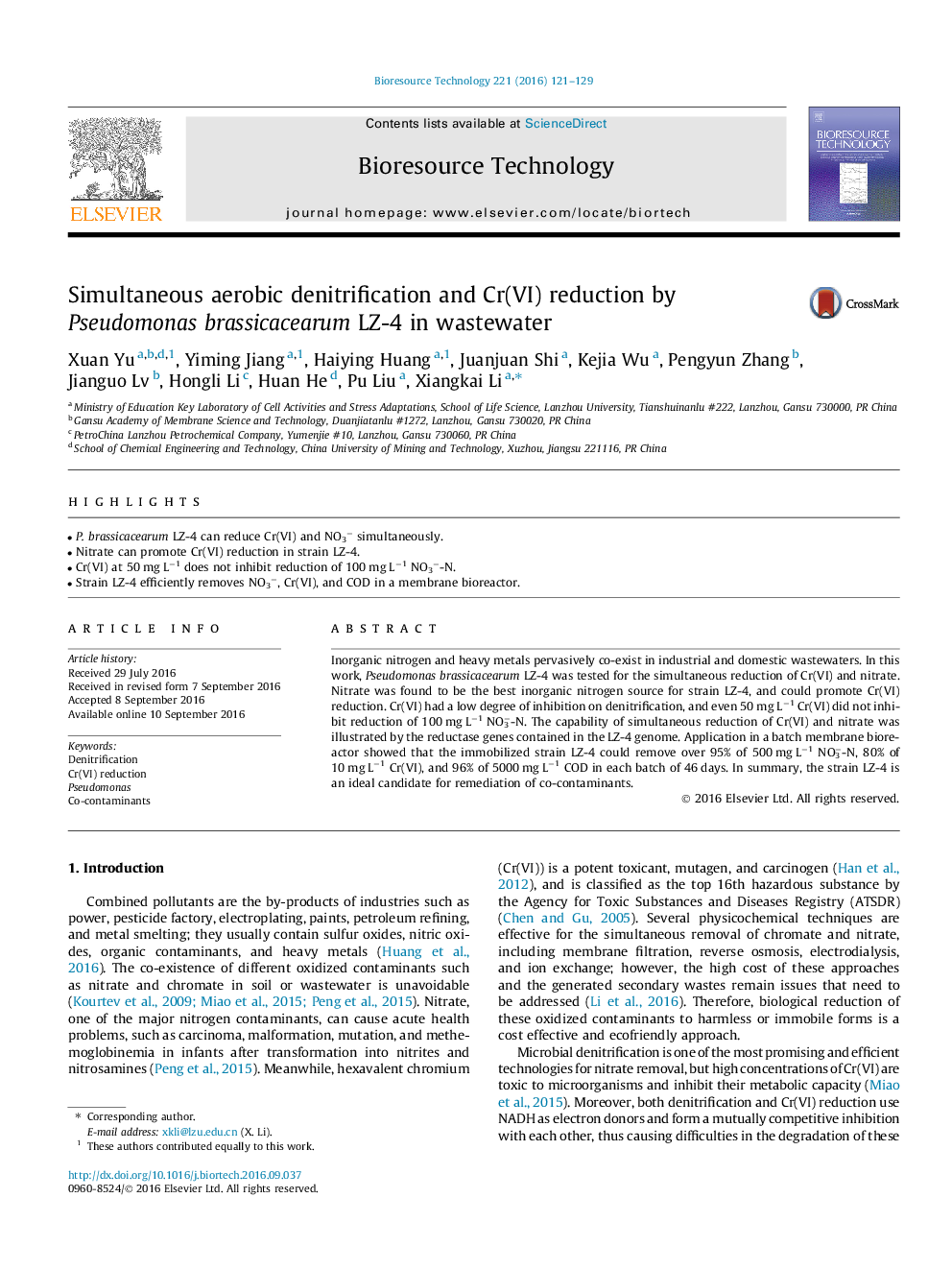| کد مقاله | کد نشریه | سال انتشار | مقاله انگلیسی | نسخه تمام متن |
|---|---|---|---|---|
| 4998039 | 1459922 | 2016 | 9 صفحه PDF | دانلود رایگان |

- P. brassicacearum LZ-4 can reduce Cr(VI) and NO3â simultaneously.
- Nitrate can promote Cr(VI) reduction in strain LZ-4.
- Cr(VI) at 50 mg Lâ1 does not inhibit reduction of 100 mg Lâ1 NO3â-N.
- Strain LZ-4 efficiently removes NO3â, Cr(VI), and COD in a membrane bioreactor.
Inorganic nitrogen and heavy metals pervasively co-exist in industrial and domestic wastewaters. In this work, Pseudomonas brassicacearum LZ-4 was tested for the simultaneous reduction of Cr(VI) and nitrate. Nitrate was found to be the best inorganic nitrogen source for strain LZ-4, and could promote Cr(VI) reduction. Cr(VI) had a low degree of inhibition on denitrification, and even 50 mg Lâ1 Cr(VI) did not inhibit reduction of 100 mg Lâ1 NO3â-N. The capability of simultaneous reduction of Cr(VI) and nitrate was illustrated by the reductase genes contained in the LZ-4 genome. Application in a batch membrane bioreactor showed that the immobilized strain LZ-4 could remove over 95% of 500 mg Lâ1 NO3â-N, 80% of 10 mg Lâ1 Cr(VI), and 96% of 5000 mg Lâ1 COD in each batch of 46 days. In summary, the strain LZ-4 is an ideal candidate for remediation of co-contaminants.
Journal: Bioresource Technology - Volume 221, December 2016, Pages 121-129